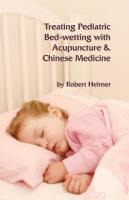Acupuncture & TCM Articles
The effects of hand-acupuncture therapy on intermittent abdominal pain in children
The effects of hand-acupuncture therapy on intermittent abdominal pain in children / Hong YR.
Abstract PURPOSE: The purpose of this study was to identify the effects of hand acupuncture therapy on intermittent abdominal pain in children.
METHOD: A quasi experimental pre-test and post (1,2)-test design was used. Data was collected from May, 2002 to February, 2003. Forty children were assigned to the experimental (20) or control group (20). The experimental group received Hand-Acupuncture therapy on the meridian point; A8, A9, A10, A11, A12, E22, E45 for 20 minutes, while the control group rested on the bed. Data was analyzed using the SAS program with Fisher's Exact chi (2) test, repeated measured ANOVA, and ANCOVA. RESULT: In the experimental group, pain intensity (f=63.26, p=0.00), A12(A)(F=60.40, p=0.00), and medication requirement (chi (2)=32.63, p=0.00) were significantly lower than that of the control group.
CONCLUSION: These findings indicate that hand acupuncture therapy is effective for reduction of intermittent abdominal pain. Therefore, hand acupuncture therapy can be considered an independent nursing intervention for reducing intermittent abdominal pain.
Conclusion These findings indicate that hand acupuncture therapy is effective for reduction of intermittent abdominal pain. Therefore, hand acupuncture therapy can be considered an independent nursing intervention for reducing intermittent abdominal pain.
Local Department of nursing, Chodang University, Korea.
Web http://www.ncbi.nlm.nih.gov/entrez/query.fcgi?cmd=Retrieve&db=pubmed&dopt=Abstract&list_uids=16027500&query_hl=1
 Pediatric Bedwetting with Acupuncture and Chinese Medicine Pediatric Bedwetting with Acupuncture and Chinese Medicine
by Robert Helmer
This book is an excellent resource for Chinese Medicine practitioners interested in including pediatrics in their practice. It is built around numerous Chinese studies on the treatment of enuresis, enabling the reader to view and treat the problem from various perspectives. How to put all this knowledge into practice is demonstrated in quite a few well-structured case histories. An introductory section on the Western view on pathology and treatment of bedwetting offers the most up to date information in an easily readable format. This book takes integration of Western and Chinese medical approaches one step further.
Through the use of some of the recommended treatments offered in this compassionate and thoughtful book the practitioner will discover just how rapid and successful TCM can be in treating this difficult (for parents as well as the child) condition.
| 